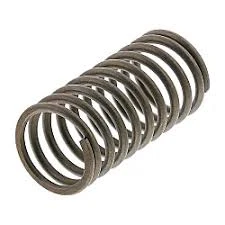
- Mobile Phone
- +8613931874955
- sales@cntcmetal.com
Understanding the Mechanics and Applications of Twist Springs in Engineering Designs
The Fascinating World of Twist Springs
Twist springs are an essential yet often overlooked component utilized in various mechanical applications. This intricate piece of engineering has captured the interest of many, from hobbyists to professionals, due to its unique properties and versatile uses. In this article, we dive into the world of twist springs, exploring their design, functionality, and significance in everyday mechanisms.
At its core, a twist spring is a type of torsion spring designed to store and release energy through rotational movement. Unlike conventional springs that compress or extend, twist springs operate under a principle of torque. When twisting force is applied to the spring, it stores potential energy. Once the force is removed, the spring returns to its original position, releasing the stored energy in the process. This dynamic is what makes twist springs particularly effective for applications that require controlled movement and energy transfer.
The design of twist springs varies widely according to their intended purpose. They can be found in numerous sizes, materials, and configurations to suit different mechanical needs. Common materials include stainless steel, music wire, and various alloys, all chosen for their resilience and ability to withstand repeated stress cycles. The specifics of the coil dimensions, including wire diameter, coil diameter, and total turns, are meticulously calculated to achieve the desired torque and resistance characteristics.
One of the most popular applications of twist springs is in door and cabinet latches. When you push the latch, it rotates and engages the latch mechanism. The twist spring is essential in bringing the latch back to its original position once the force is removed, ensuring that the door closes securely. This simple yet effective mechanism is often taken for granted—yet it exemplifies the elegance of twist spring design and function.
twist springs

Another notable application of twist springs is in toys, specifically in wind-up mechanisms. Toys powered by twist springs allow for fascinating movement, transforming a simple mechanical action into endless hours of entertainment. When the key of a wind-up toy is turned, it twists the spring, storing energy. Upon release, the spring unwinds, propelling the toy forward with surprising speed. This charming interaction between the child and the toy not only captivates young minds but also provides an excellent practical demonstration of physics in action.
In addition to toys and latches, twist springs have found utility in automotive design. They are used in components such as hoods and trunk lids where they help in managing the weight, making them easier to open and close. The automotive industry benefits significantly from the precision and reliability of twist springs, which are engineered to ensure safe and efficient operation in various vehicle parts.
The versatility of twist springs extends beyond traditional applications. In the realm of technology, they play a critical role in electronic devices, from keyboards to switches. In a keyboard, for instance, twist springs enable the keys to return to their neutral position after being pressed, providing tactile feedback to the user and enhancing the overall experience of device interaction.
In conclusion, twist springs are more than just mechanical components; they are hidden heroes of many everyday conveniences that we often take for granted. Whether in toys, automotive systems, or electronic devices, these ingenious creations employ fundamental principles of physics to achieve their remarkable functions. As we continue to innovate and develop new technologies, the role of twist springs will undoubtedly evolve, yet their foundational importance will remain steadfast. Understanding the science behind twist springs not only deepens our appreciation for their functionality but also encourages us to explore the creative potential inherent in mechanical design.
share:
-
Why Sacrificial Formwork Is Redefining Underground ConstructionNewsJun.06,2025
-
The Structural Dynamics of Modern Concrete: How Snake Spacers Revolutionize Flexible ReinforcementNewsJun.06,2025
-
Snake Spacers Smart-Lock Concrete Reinforcement with Surgical PrecisionNewsJun.06,2025
-
Snake Spacers: Reinforcement Precision for Modern Concrete ProjectsNewsJun.06,2025
-
Snake Spacers Powering Concrete's Structural DNANewsJun.06,2025
-
Slither into Success: Snake Spacers' Precision Bite for Unbreakable ReinforcementNewsJun.06,2025
-
Sacrificial Formwork: Building Stronger, Faster, and Safer StructuresNewsJun.06,2025



















